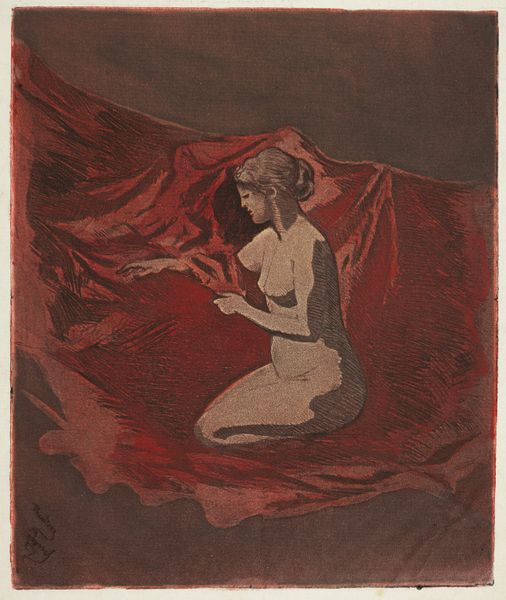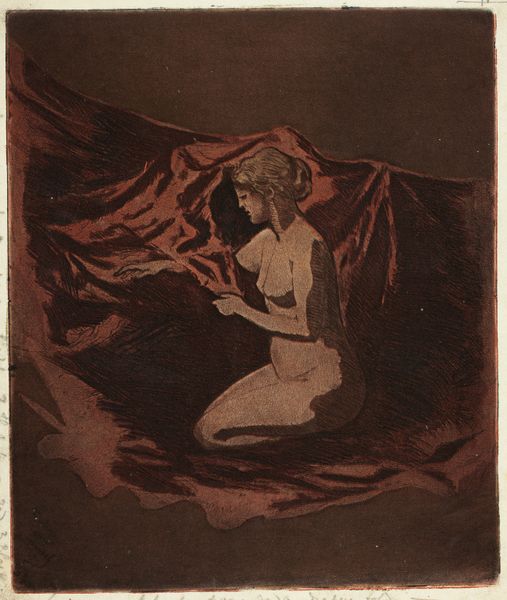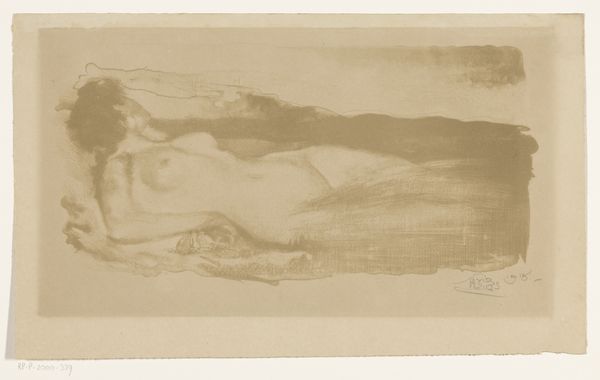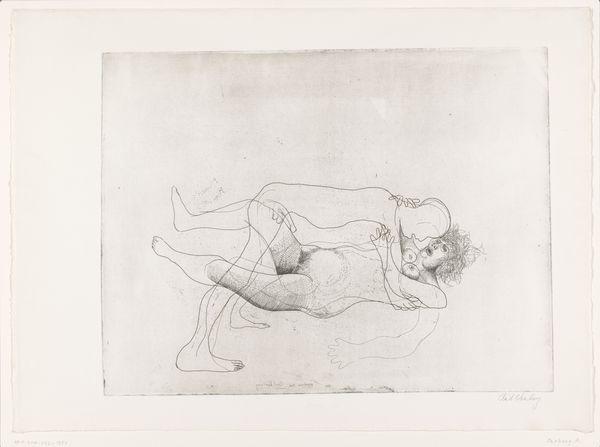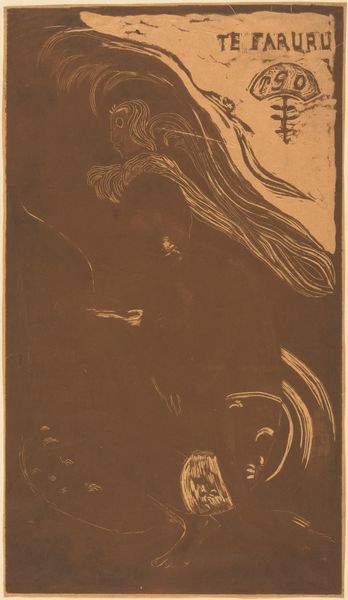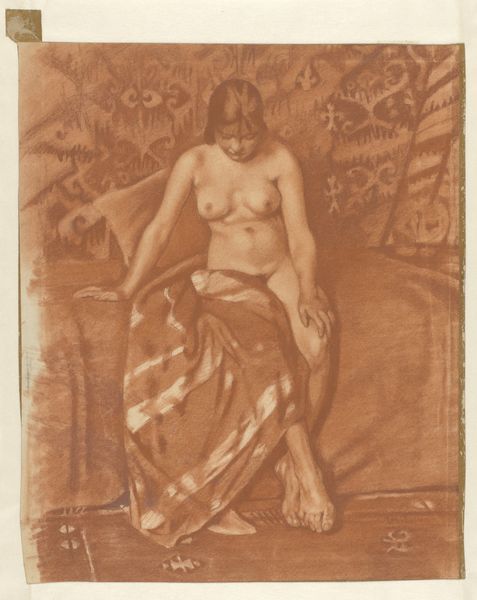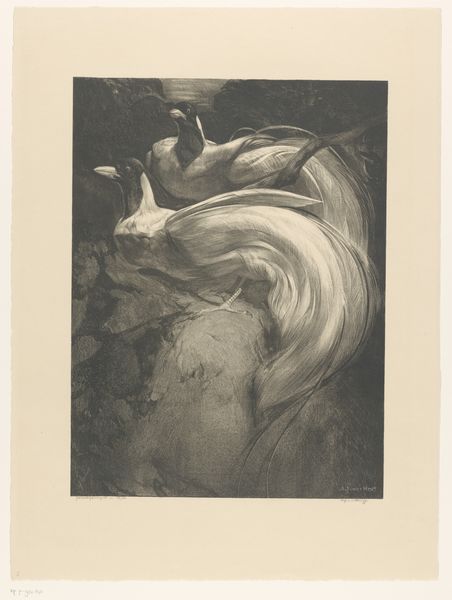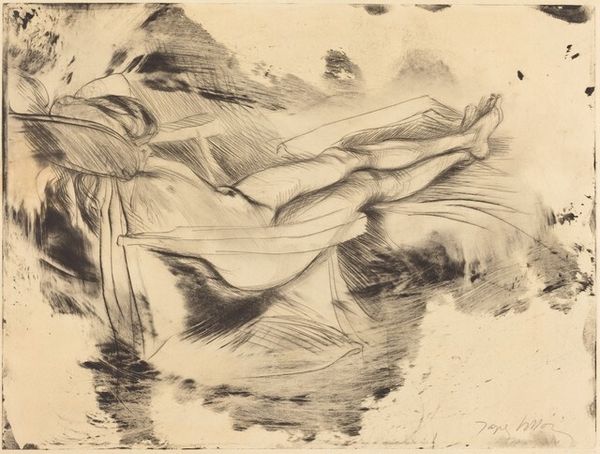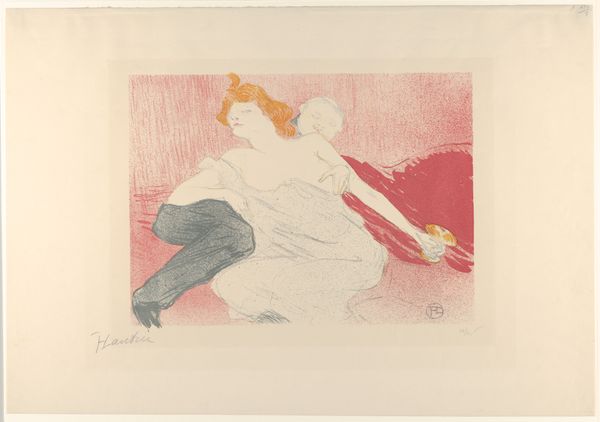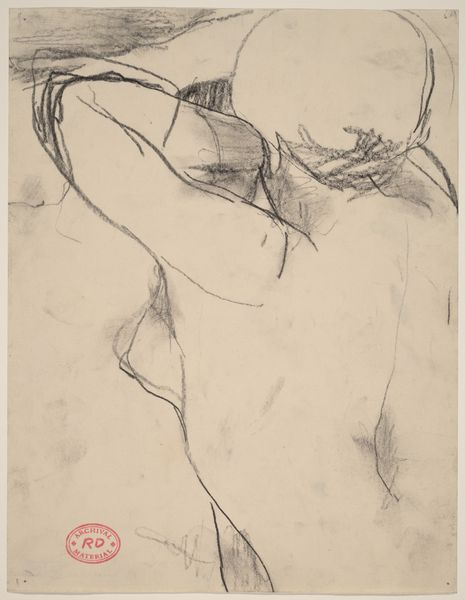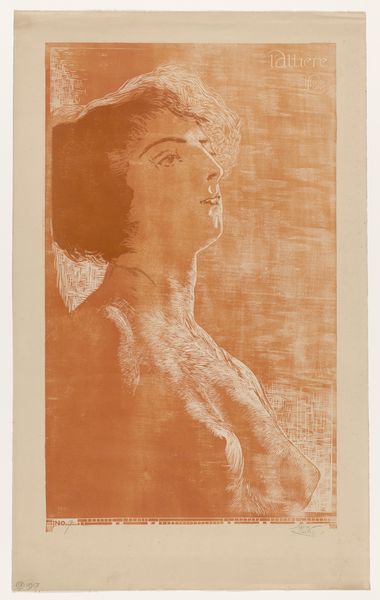
drawing, print, etching, paper
#
portrait
#
drawing
#
art-nouveau
# print
#
etching
#
etching
#
figuration
#
paper
#
nude
Dimensions: 251 × 211 mm (image/plate); 280 × 243 mm (sheet)
Copyright: Public Domain
Curator: I am struck immediately by the overall color, a very warm, enveloping orange. And the hatching—so delicate and precise! Editor: You’ve just encountered “Embers Glow,” a print by Theodore Roussel created sometime between 1890 and 1897. Roussel was a complex figure, deeply enmeshed in the aesthetic movement in Britain. The print here at the Art Institute offers a fascinating glimpse into the art world’s shifting representations of women during this period. Curator: Yes, and one could interpret it simply as an exercise in the study of light and shadow on the human form. I think the orange tone dominates—its saturation almost overwhelms the subtlety of the composition, the very fine rendering of line—although there is a compelling contrast between the smooth planes of the nude figure and the crinkled fabric around her. Editor: The print participates in an important moment in history. You had these new representations of the female nude emerging as symbols of sensuality and liberation, and that was influencing broader cultural shifts. And a number of female artists started taking part, reinterpreting the subject in their own terms, and creating important dialogue on female identity. Curator: The nude woman is presented in a domestic sphere, within, what is ostensibly the sitter's chambers, yet that warmth I mentioned at the top may belie this very domestic and arguably feminine realm. If you like, the intimacy could come off to some as subtly erotic or very private and exclusive. It may tell much of who Roussel and those like him imagined as their target audience, what kind of response or transaction they were soliciting. Editor: Precisely! It's a window into social attitudes, assumptions about viewership, artistic licence, and the artist's relationship with their audience. To your point, I also wonder about the very limited edition size, which might signal at once a more elite class of clientele, but on the other, less commercial need. Curator: Well, it's been really enlightening thinking through how material and subject mingle so well in a historical setting. Editor: Absolutely. There are multiple narratives that the form and provenance bring to light and I find the dialogue between social and aesthetic qualities always keeps me engaged.
Comments
No comments
Be the first to comment and join the conversation on the ultimate creative platform.

